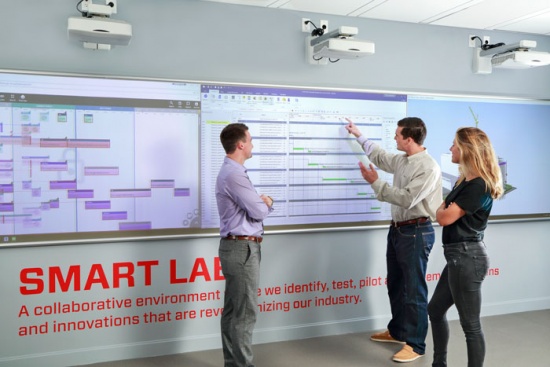In his panel presentation, “Enhanced Realities and Immersive Experiences,” at the upcoming Tech+ conference on May 22 in New York City, co-presenter Chris Mayer, chief innovation officer at Suffolk Construction, will discuss how innovative technologies like AR and VR are changing the industry. But chasing the latest “shiny, new object” isn’t what the talk—or even the Tech+ expo—is all about.
“It’s not a lack of available technology solutions that could potentially be deployed,” he said. “It’s the idea about how do you focus on delivering value, not just delivering change, and how do you make sure that communication and collaboration are effective in supporting the organization?”
Mayer has worked at Suffolk Construction for the past three years, applying what he learned during his 30-year tenure in print media at The Boston Globe to effectively integrate people, process, and technology. In an industry that experienced significant disruption, Mayer says the challenges and solutions employed, along with “focusing on not just bright, shiny objects and technology, but how to create value out of that and the necessary steps of engaging people in the organization, and putting processes in place, were all potentially applicable” to the construction industry where he landed.
Creating value across the board
Data drives innovation, and value creation must remain front and center of the process. Otherwise, organizations risk going out of business if they focus solely on technology for technology’s sake, he says. “Part of the way we want to make sure we’re driving that [value] consistently in the innovation that we’re supporting is, ultimately, ‘the juice is worth the squeeze.’ You want to find something that’s going to matter.”
And what counts isn’t just making incremental improvements to specific functions within the design and construction industry, which Mayer observes is highly distributed. Rather, it’s about taking a holistic view and rethinking the entire process end-to-end, he says.
“I think we are at a point in time where looking both at opportunities vertically—which is traditionally where I think people would focus on productivity gains—but also looking horizontally at the entire value chain of the construction process from the initial touch point with the owner, through the design, through the financing stages, through the planning and optimization stages, through the execution and construction control periods into the warranty and the quality control process,” he explained. “The idea about how to scale innovation is a big opportunity for us in the industry.”
The right tool for the job
To that end, Suffolk Construction has created “smart labs” internally that serve as sort of operations control towers where technologies can be invented, tested, implemented, and scaled. Utilizing a series of interconnected screens on what Suffolk calls “huddle walls,” the team at Suffolk can simultaneously view project information and financial reports or engage in lean strategies and design planning throughout the lifecycle of a project.

The labs also feature a virtual reality “cave” with head-mounted displays in which projects can be viewed individually or as a group.

Naturally, Mayer doesn’t see immersive technology as a replacement for existing communication tools, but rather as an alternative. “When I look at virtual reality or augmented reality… I see those as additional options to add value to the conversation,” he said. “Because some information is going to be most effectively delivered in sort of static form on an iPad, but some of it is going to be much more effective if you put on a headset and engage with it.”
Whatever is most effective—whether it’s a 3-D model, a 2-D model, or shop drawings—is the tool that should be used, he adds. At the end of the day, that’s what adds the most value.











